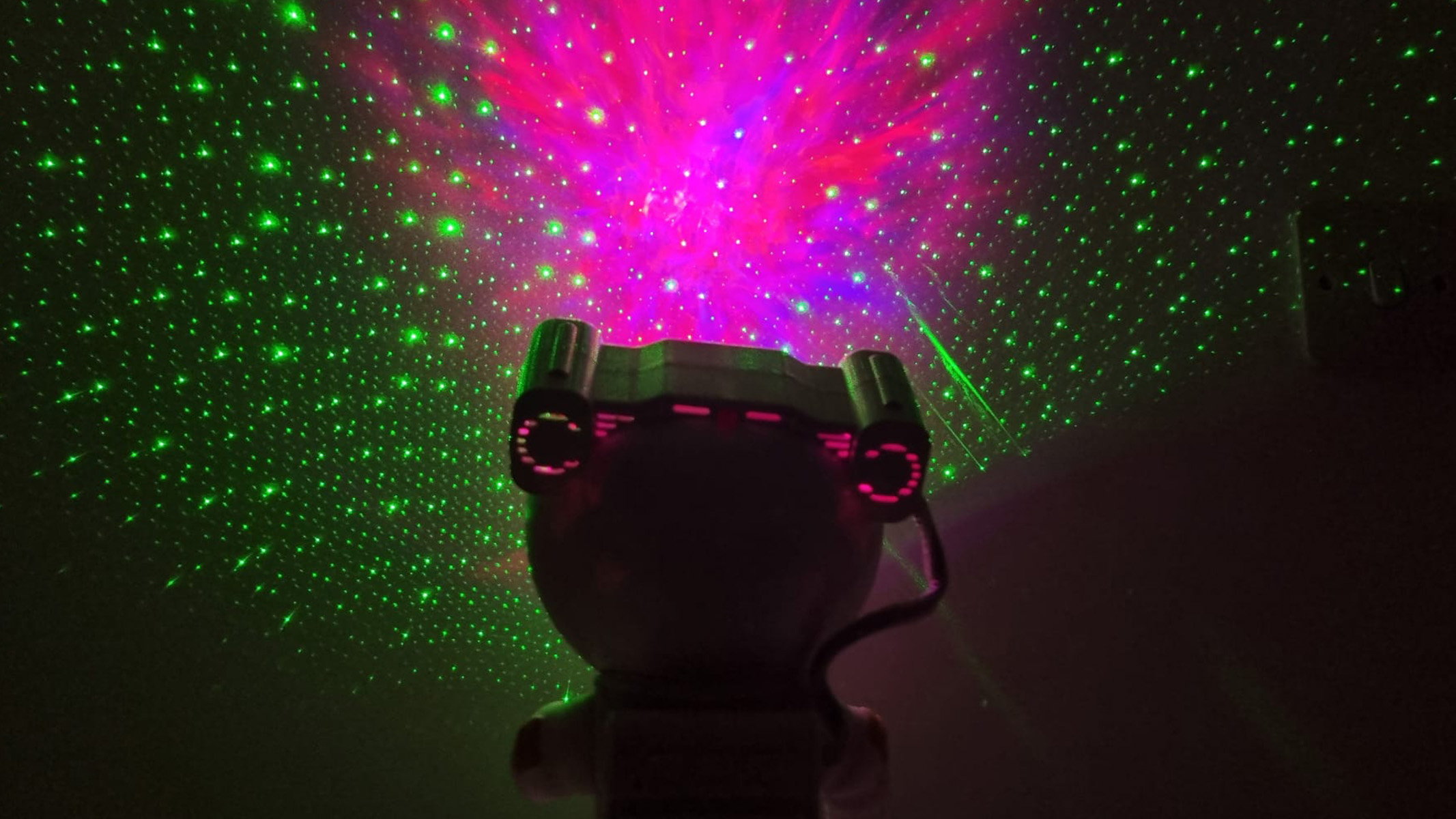
Who doesn’t love gazing into the night sky, wondering what exists beyond what we can see with our naked eyes? This ornamental astronaut projector provides a calming display of stars and nebulae, transporting its audience into imagining the unknown from the comfort of their own home.
Size: 120 x 113 x 228mm
Bulb Type: LED
Laser: Class 1 Laser
Control: On body and remote
Rotation: Yes
Sleep timer: Yes
Speaker: No
Projection Surface: Not specified
Night sky or star projectors are often used in bedrooms and can be used to relax or create many sensory experiences. Adults can benefit from mood-enhancing effects, whether to reduce anxiety, support sleep or create an immersive gaming environment.
We picked up the Astronaut Starry Sky Projector to see how well it stacks up against the best star projectors on the market, and we were thoroughly impressed with this adorable little projector.
Astronaut Starry Sky Projector: Design
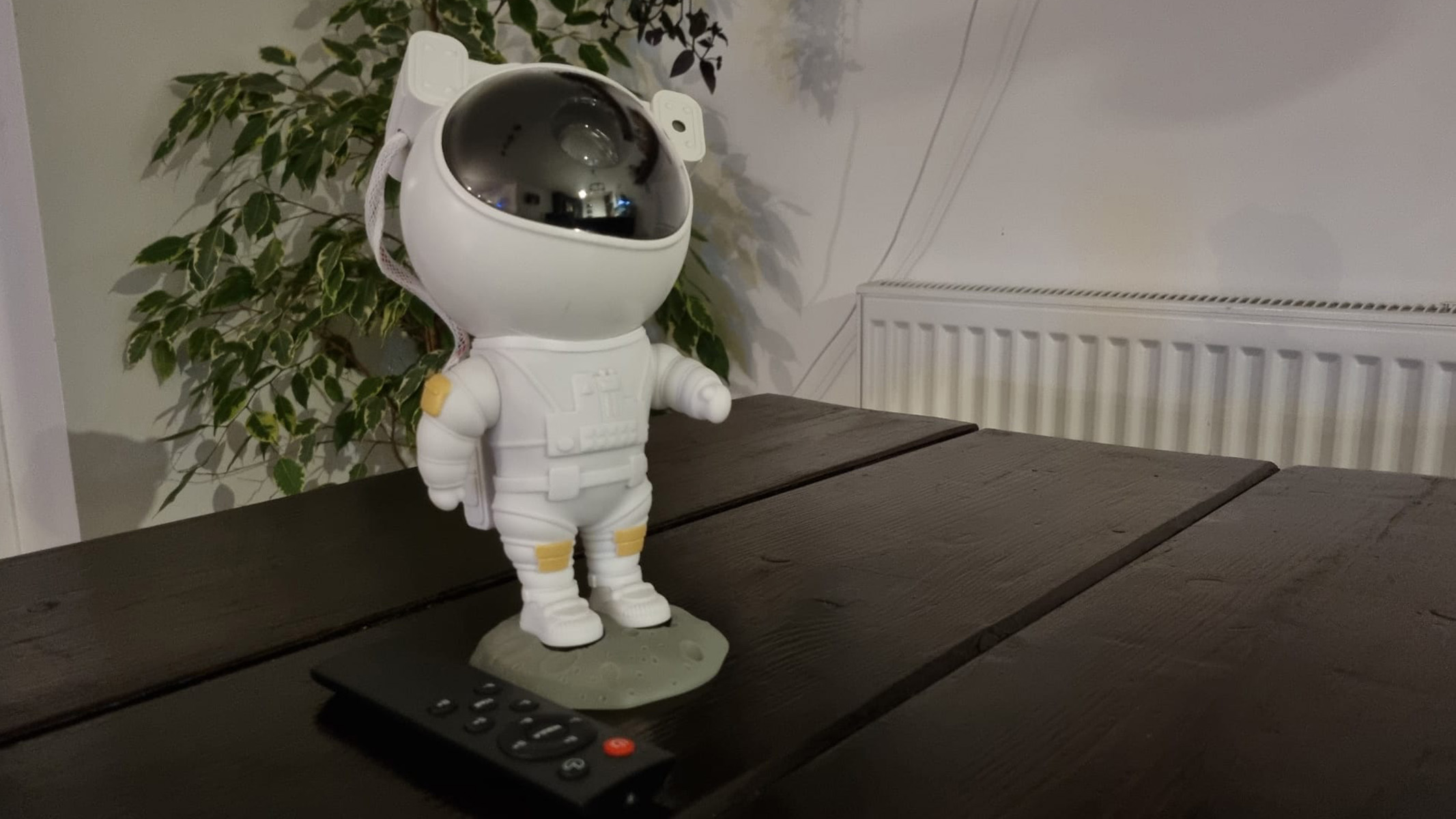
- Adjustable projection angle
- Solid build quality
- Novelty astronaut form factor
The most obvious thing to comment on is this star projector's novelty appearance. It is an astronaut wearing a spacesuit, and it looks like they are gazing out of the visor at the wonders of the sky. Unlike other star projectors we've come across, this one doubles up as a space-themed ornament. Though perhaps geared towards children, any space-loving adult could be excused for having it on their shelf!
Disappointingly, the external packaging is pretty basic. In fairness, it shows precisely what the product is and does but the colors (white stars are on a blue background) are not a true reflection of the product. We'd have liked to have seen an image of a real-life projection (like you can see in this review), as that gives the buyer a more realistic representation of the performance, which is actually better than the box suggests.
The astronaut's space helmet is where the laser and lights are projected from, and the head of the astronaut is rotatable, connected to the body with strong-ish magnets. This allows you to project the 'nebula' in almost any direction, filling the room with 'stars' (twinkling green lasers) and color or projecting onto a smaller surface area for a more vivid and focused light.
Before getting our hands on this projector, we had expected it to feel toyish and flimsy, but the build quality is surprisingly good, particularly for what appears to be a novelty projector.
The magnets are strong and hold the astronaut's head onto the body securely, even staying attached should you pick the device up by its head. His large head adds to his 'cute' appeal, but this makes him a little unstable. The manufacturers have counterbalanced him with a lunar base, but we suggest he is kept out of the reach of small hands as anything more than a small amount of wobble will send him off balance. The lens (the helmet's visor) is firm and does not dent or crease. As with most protruding lenses, it may get scratched over time with excessive handling or improper storage, but we didn't encounter any problems.
Astronaut Starry Sky Projector: Performance
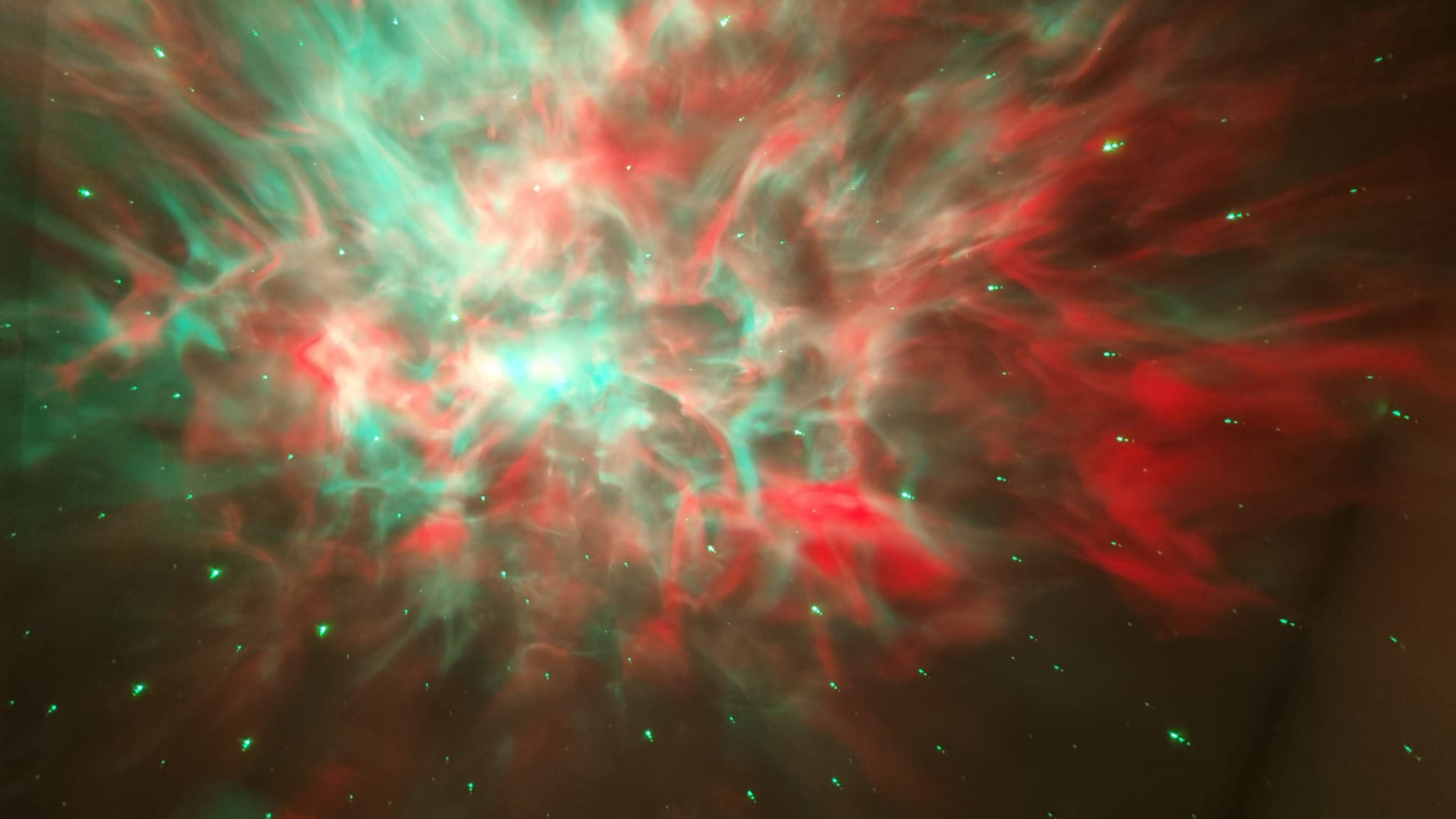
- Adjustable brightness
- Customizable light display
- Green laser stars
The astronaut starry sky projector provides a beautiful, color-rich display of eight different nebulae color combinations. Each is eye-catching, and it isn't easy to pick a favorite. The projection is bright and clear, even during the day with the curtains open or with the lights on.
As expected, the patterns are clearer and more defined when projected onto a close surface. We (and our children) find some of the nebula more interesting than others; we particularly favor those with two contrasting colors. The brightness of the lights can be adjusted via the remote, allowing five different brightness levels. The laser has slightly reduced options of three brightness levels and can be turned off entirely if you'd prefer.
You may be disappointed to find the stars are an unnatural green. Unfortunately, this is not unusual amongst star projectors due to the complexity of creating yellow or 'white' lasers. The stars are an exciting addition though; they fill the room and 'breathe' at a frequency of your choosing — four options blinking on and off at different speeds.
Unfortunately, during our review, we mistakenly wiped dust off the glass after leaving the astronaut in situ for a few days (rather than blowing on it or using a more appropriate cloth), resulting in a couple of scratches to the lens. This means some dots appear as stripes rather than stars — oops. Our fault, but it does indicate the fragility of the lens. A protective cover for times when it is not in use would help avoid the problems of dust and fingerprints.
Astronaut Starry Sky Projector: Functionality
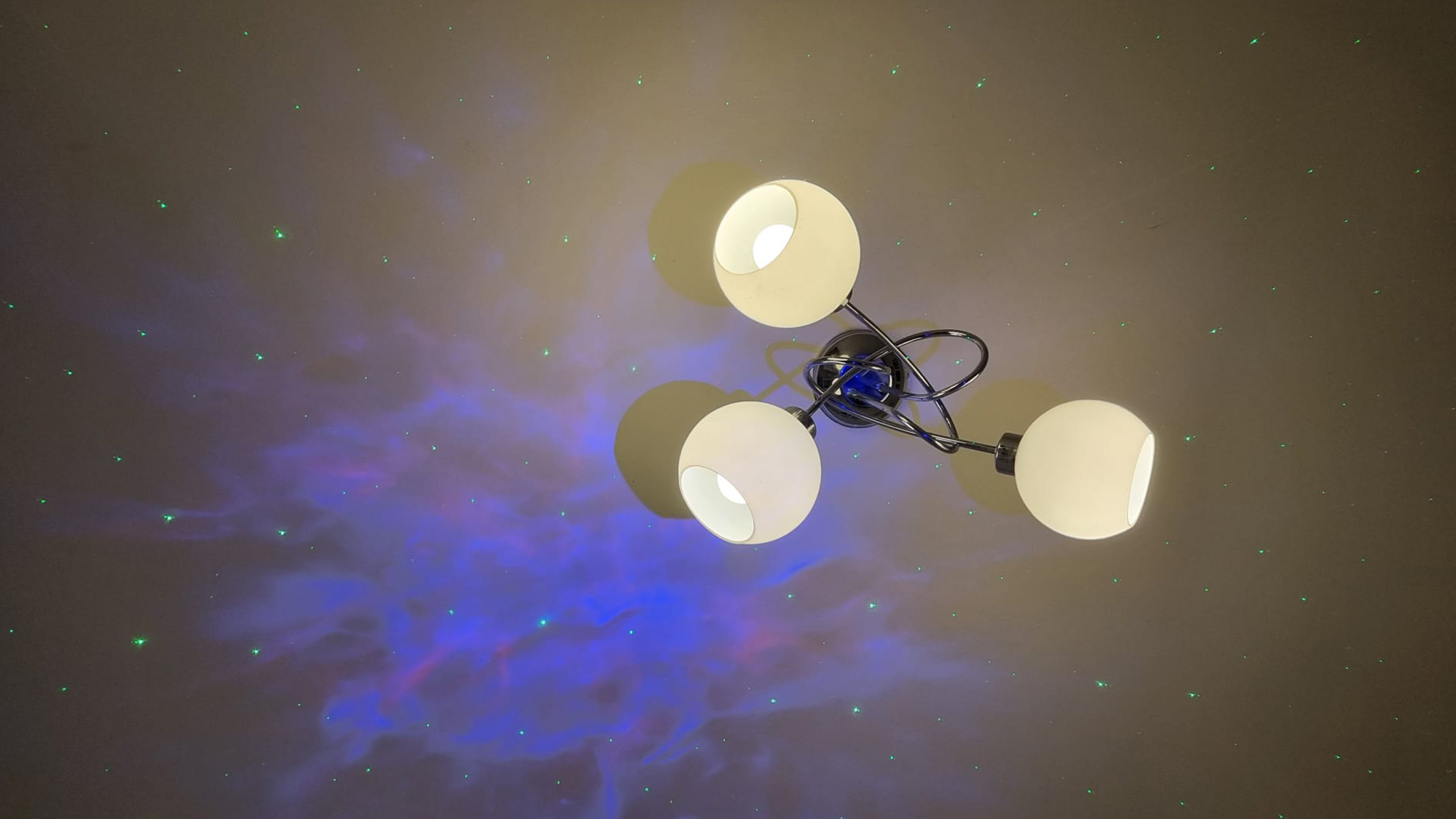
- Sleep timer with two settings
- DC adapter (not USB)
- Remote control
As with many star projectors, the astronaut features a sleep timer. This can be activated from the buttons on his backpack or by using the remote. There are two settings; 45 or 90 minutes and when set, his backpack emits a small blue or red light. This feature is perfect for a nursery or a child's room as it will switch itself off without having to potentially disturb the child. Also, with increasing energy rates, every bit you can save helps. The motor is very quiet and therefore doesn’t disturb sleep or ruin the lovely ambiance of the room that is created by the lights.
The astronaut needs a constant power supply when in use, provided by a DC port. The lead has a USB-A end requiring a suitable power socket or plug. The power lead is very short, so depending on where you plan to put it, an extension lead may be required. We'd have preferred to see the astronaut being powered by either USB-A or USB-C, as this gives more flexibility in terms of power choices. Some may prefer using rechargeable batteries, but there is no option to do that with this star projector.
The lights can be controlled in two ways — three buttons on the astronaut's backpack or the supplied remote control (takes 2 x AAA batteries — not included). The supplied instruction manual is comprehensive enough to get the astronaut up and running quickly.
The remote control provides a useful way to customize the lasers and nebulae without having to leave your seat. We do worry that as it's so small, it could easily get lost, especially in a child's bedroom. Perhaps a slot in his backpack for when it is not in use would have proved useful. The remote has a suggested operating range of less than 5m, sufficient for most nurseries or living areas. An alternative to the remote would be an app or voice control, as found in some other models of star projectors, such as the Bliss Lights Evolve.
Should I buy the Astronaut Starry Sky Projector?
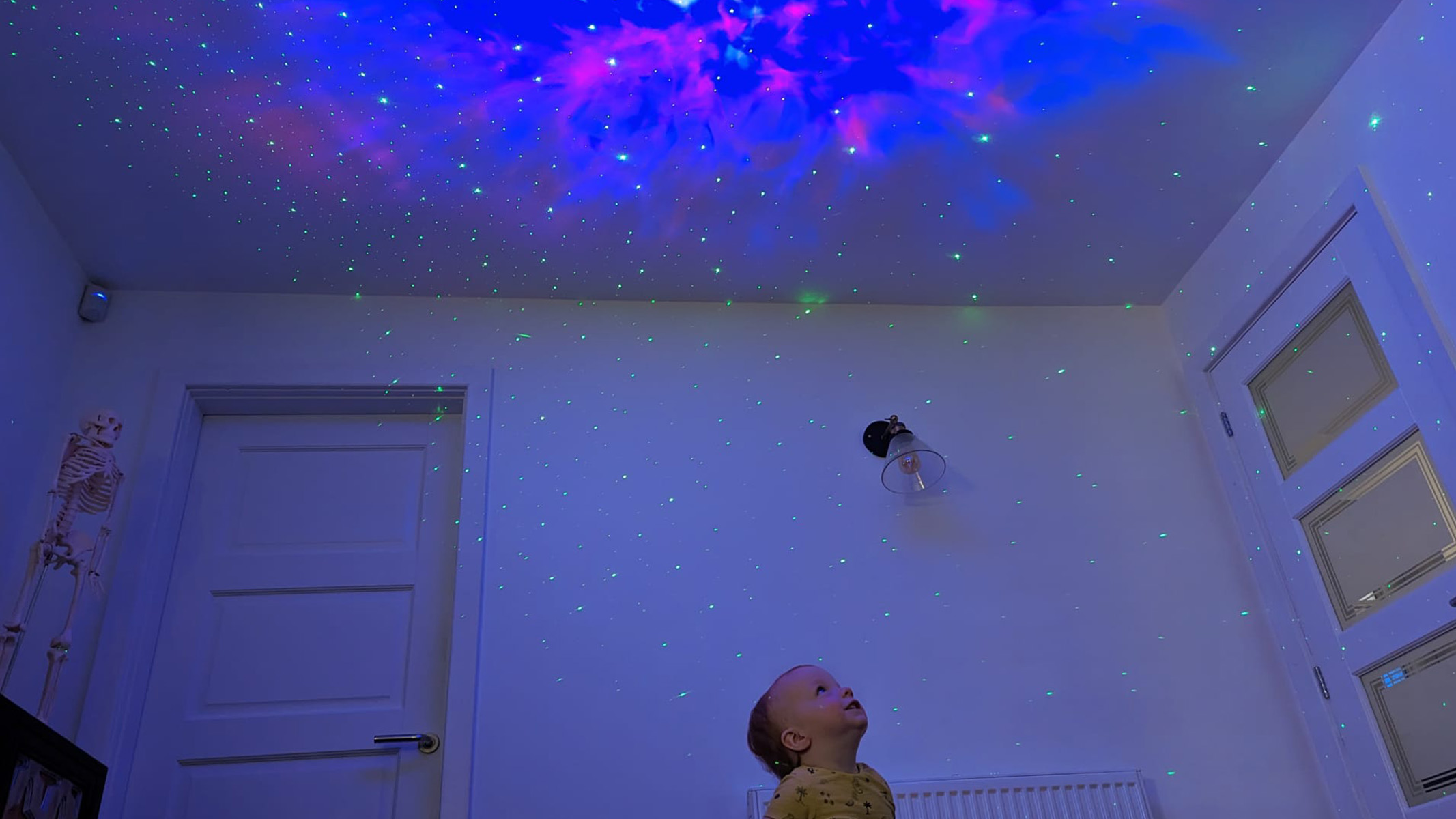
For a projector that will be left in view, this astronaut ticks all the design boxes. It doesn't look out of place in a bedroom, office or living area and would make a lovely gift for any space fan.
The stars cover a large area with the nebula located in the middle. The rotatable head makes finding a location for the astronaut relatively easy if the distance to the plug socket isn’t too far from surfaces or shelving. If wires aren’t your thing, you will need an alternative battery-powered projector, although you may find you have to sacrifice quality for that. If you are like us, the wire could be imagined as the safety tether hooking the astronaut to their spacecraft.
For someone who isn’t concerned about scientific accuracy but wants to improve the ambiance of a room, the Astronaut Starry Sky projector is a cost-effective purchase.
The astronaut design has been a hit with manufacturers; you will need to ensure you are buying the correct version to avoid poor-quality workmanship. The price of the starry sky projector varies online, and we would expect to pay around $35.
If the Astronaut Starry Sky Projector isn’t for you
If you're looking for less of a novelty-designed star projector, you might want to consider the Sega Toys Homestar Flux. It appears on almost all of the 'top X star projector' lists thanks to its premium look and feel and for creating one of the most realistic-looking night skies you can mimic with a star projector. You can also purchase additional projection discs to further your experience. This projector is significantly more expensive, but it delivers quiet operation, good build quality, and is a great educational tool. You can pick up the Sega Toys Homestar Flux on Amazon for around $269.
If it's the ambiance of the nebulae patterns and colors that are more important to you than scientific accuracy, the Encalife Aurora Borealis Northern Lights Star Projector may be a good feature-rich alternative. This projector creates a non-scientific but realistic-looking Aurora that can be app controlled. You can personalize your experience by choosing from millions of color combinations. The projector also comes with an in-built speaker. The 'musical rhythm mode' can change the Aurora, stars and moons depending on whatever music is playing, ideal for creating an appropriate ambiance — for example, slow-moving patterns to accompany soothing bedtime sounds or fast-paced kitchen party mode — and it's surprisingly effective.
Finally, an alternative would be the BlissLights Sky Lite 2.0 (or the newer BlissLights Evolve). It's a similar price to the Astronaut but gives more creative control thanks to the easy-to-connect app, more timer options and more default light modes. It uses a USB-C cable for power so can be run from anywhere with a USB port.







